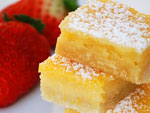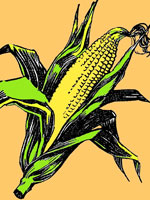Curator of Historic Interiors
Emily Roberts, assistant curator of historic interiors at Colonial Williamsburg, talks about the research involved in furnishing and re-outfitting rooms according to colonial practices.
Emily Roberts, assistant curator of historic interiors at Colonial Williamsburg, talks about the research involved in furnishing and re-outfitting rooms according to colonial practices.
Frank Clark, supervisor of Historic Foodways and brewmaster, talks about preparing food according to colonial-era practices.
Wesley Green, an interpretive gardener at Colonial Williamsburg, talks about the practices of colonial-era gardening, the trade in seeds, and the class associations with gardens and gardening.
Robert Brantley, who is a journeyman in the historic foodways department at Colonial Williamsburg, discusses the celebration of holidays in colonial North America, including the preparation of food for these holidays.
From the Bowery Boys website:
"New Yorkers are serious about their pizza, and it all started with a tiny grocery store in today's Little Italy and a group of young men who became the masters of pizza making. In this podcast, you'll find out all about the city's oldest and most revered pizzerias—Lombardi's, Totonno's, John's, Grimaldi's and Patsy's in all its variations. But if those are the greatest names in New York-style pizza, then who the heck is Ray—Original, Famous or otherwise?"

Historical research usually begins with reading. Books and articles open your eyes, and open the door to a period. They engage and entice you, and before you know it, you're immersing yourself in literature written about the period you're studying. It is wonderful to read literature—both fiction and nonfiction—written during the period, as well. Children always get a kick out if it when I tell them that when I was researching Felicity, my character who lived in Williamsburg, Virginia just before the Revolutionary War, I read a journal kept by a tutor who lived with a family that had eight children in it. My 21st-century readers laugh when I tell them that two of the sisters in the family had a fight because one sister borrowed the other sister's hairbrush without asking. The hairbrush owner was so mad that she waited for her sister to fall asleep, and then she cut off her eyebrows! And this was in 1773!
If you can find books and stories written for children or about children from the period your class is studying, those stories will be a great way to engage your students. Books with paintings, photographs, and advertisements for your students to scrutinize are fun, too. Your students will see that though clothes and conveyances, art and architecture, design and concepts of beauty have changed, human nature—especially children's natures—have not!
But reading, that is, using your eyes to research a period, is not the only way to make a period from the past come to life. Your students will enjoy learning by using all of their senses. For example, to help children have a tactile sense of how Felicity felt in her 18th-century clothes, I ask children to take a deep breath and then use their hands to push in on their rib cages as hard as they can. I explain that boys, men, ladies, girls, and even babies wore stays in the 18th century, and stays were sort of like a very tight vest. The children see that their imaginary stays make them stand up very straight. They feel constricted. They can hardly breathe. I explain that just as Felicity's body was held in by the stays, so too her life was held in and constricted by rules that she was expected to follow. The children understand the metaphor—and they sigh with relief when I tell them to let go! They're glad they live in the 21st century, when our bodies and our lives are freer.
Scent is particularly evocative. When I speak to children about Josefina, who lived on a rancho in New Mexico in 1824, I give the children herbs to smell: peppery, flowery, minty, musty, fishy, soapy, and yeasty-smelling herbs. The children can close their eyes, smell the herbs, and be transported back in time to Josefina's rancho. There is a subtlety to the sense of smell, and smells are fun, too! If you can collect soaps, herbs, spices, or flowers connected to the period you're studying, your students will enjoy it. Scent makes a direct and powerful connection to memory; when we smell a familiar scent, we are automatically transported back to the time it reminds us of and we recall the circumstances, emotions, and sensations. Once your students have smelled cod liver oil, commonly dosed to children in the 19th and even early 20th centuries, they'll never forget it!
Taste is equally evocative, and equally revealing about an historical period. That salty ham from Felicity’s period can lead to a discussion about food preservation, lack of refrigeration, transportation, health, nutritional differences between economic strata, celebrations, hygiene—well, you get the idea! I remember a wonderful event for children at which we ate food from the World War II era, as if we were my character, Molly McIntire. Tasting cake made without sugar or butter, bread made with tomato juice, mashed turnips, and Spam sandwiches led to a great discussion about rationing, Victory Gardens, black market shenanigans, vitamins, food advertising, grocery shopping, regional food specialties, and even body consciousness. (It was considered healthy for a child to be rather stout and sturdy, and parents sought ways to encourage their children to eat up. We know better now!)
Last but not least, your students' sense of hearing can enchant them and educate them about an historical period. Listening to the rousing John Philip Sousa marching music from the turn of the last century—the period my character Samantha lives in—will thrill your students and tell them a great deal about the highly patriotic Zeitgeist of 1904. Listening to the clackety-clack of typewriter keys and the ding! of the carriage return on a 1930s manual typewriter and comparing those sounds to the quiet tap-tap-tap of computer keys will inform them about how our communication tools have evolved from the Depression era to today. Sounds that have NOT changed can be fun and informative, too. I still laugh when I remember that when I was writing about Josefina, I needed to know the sound a piano made when it was dropped. I called all the piano movers in the Washington, DC area yellow pages. You'll be distressed to learn that every single mover could tell me—and imitate!—exactly the sound a dropped piano makes! I tried to describe the sound in words so that my readers could "hear" it, too.
Seeing, feeling, smelling, tasting, and hearing are varied and vibrant avenues for teaching about historical periods. They're fun, and using them is just good sense!
To read more by Valerie Tripp, try her two earlier blog entries for Teachinghistory.org: "Vitamins in the Chocolate Cake: Why Use Historical Fiction in the Classroom?" and "Looking Backward, Looping Forward: How to Make a Period of History Matter to Your Students." She also contributed to our Roundtable "What Role Should Fiction Have in the U.S. History Classroom?"
Interested in adding taste and sound to your teaching? Take a look at our Website Reviews. More than 80 websites feature music resources—the Library of Congress's National Jukebox is a rich starting point. To whip up some historical recipes, try Michigan State University's Feeding America, which features more than 70 cookbooks published between 1798 and 1922. The University of Wisconsin's Recipe for Victory: Food and Cooking in Wartime can also give students a sense of how foodways reflect changes in the world at large.
The Museum is a recreation of the first McDonald's Restaurant opened in Des Plaines, IL, by McDonald's Corporation founder, Ray Kroc, on April 15, 1955. The customer service and food preparation areas contain original equipment used in the days when fresh potatoes were peeled, sliced, blanched and fried; milkshake mix and syrup were whipped up on the Multi-mixers; Coca-Cola and root beer were drawn from a barrel, and orangeade from the orange bowl. The all-male crew is represented by mannequins dressed in the 1955 uniform—dark trousers, white shirts, aprons, and paper hats. The basement features a historical display of photos, memos, early advertising, memorabilia, and a short video presentation.
The museum offers exhibits and a short film.

Only two sources contain eyewitness accounts of what has become known as the "First Thanksgiving." Neither account mentions whether corn was roasted, popped, or served at all. Yet it seems plausible that what Edward Winslow, a founder of the Plymouth Colony who was to become its governor in 1633, described as Indian-Corn indeed was included in the feast and in fact may have been boiled.
In a letter dated December 11, 1621, one year to the day after the Pilgrims landed at Plymouth Rock, Winslow wrote that the previous spring the settlers had planted some twenty acres of Indian corn, in addition to some six acres of barley and peas, and that while the harvest of barley was only "indifferent good" and the peas "not worth the gathering" he related that "we had a good increase of Indian-Corne." Governor William Bradford, in his account of Plymouth Plantation written years later, stated that during the first summer, “there was no want," with waterfowl, turkey, and venison in abundance, in addition to "about a peck a meal a week to a person, or now since harvest, Indian corn to that proportion."
If these accounts are to be believed, Indian corn, seemingly a staple of the settlers' diet, likely would have been eaten during the three-day harvest feast with the Wampanoags that Winslow also described. A 1674 account of Indian life by Daniel Gookin, superintendent of the Indians in Massachusetts, related, "Their food is generally boiled maize of Indian corn, mixed with kidney beans, or sometimes without."
Timothy J. Shannon, Indians and Colonists at the Crossroads of Empire: The Albany Congress of 1754. Ithaca: Cornell University Press; Cooperstown: New York State Historical Association, 2000.

Highlights of Coca-Cola television advertisements from the Library of Congress Motion Picture archives are exhibited on this site, with 50 commercials, broadcast outtakes, and experimental footage.
There are five examples of stop-motion advertisements from the mid-1950s, 18 experiments with color and lighting for television ads from 1964, and well-known commercials, such as the "Hilltop" commercial featuring the song "I'd Like to Buy the World a Coke" (1971). Additional resources include the "Mean Joe Greene" commercial (1979); the first "Polar Bear" commercial (1993); the "Snowflake" commercial (1999); and "First Experience," an international commercial filmed in Morocco (1999).
The site also includes a bibliography and links to finding aids for other television commercials at the Library of Congress. While this site is relatively small, it provides a good resource for studying the history of post-World War II consumer culture in terms of content and technique.
From the National Constitution Center website:
"Award-winning New York Times-bestselling author Mark Kurlansky takes us back to the food and eating habits of a younger America. In the 1930s, with the country gripped by the Great Depression and millions of Americans struggling to get by, President Franklin D. Roosevelt created the Federal Writers' Project under the New Deal as a make-work program for artists and authors. A number of writers, including Zora Neale Hurston and Eudora Welty were dispatched all across America to chronicle the eating habits, traditions, and struggles of local people. The project, called 'America Eats,' was abandoned in the early 1940s because of the World War and was never completed."
To listen to this lecture, scroll to "The Food of a Younger Land," which is the July 1, 2009 post.